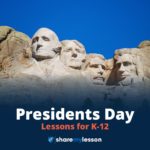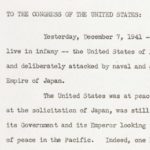The U.S. Constitution grants the President the power to appoint people to a variety of government positions. These appointments require careful thought and consideration since the people can have a great impact on the lives of many Americans during that President’s term. Some appointments need even greater thought and consideration, and those are to the federal judicial system and more importantly, to the Supreme Court of the United States. Justices of the Supreme Court (and other federal courts) serve lifetime appointments. Their rulings as they interpret the Constitution, and other situations as outlined in Article III of the Constitution, can have far-reaching effects for generations. With this awesome power to appoint comes an equally awesome responsibility to make sure that the individuals are the best people for the job. In this lesson, students will examine the appointment of Supreme Court Justice Sandra Day O’Connor, who was also the first female Justice. Students will examine the process by which a President makes the selection and the steps that lead to that person being confirmed by the Senate (or not).
Presidents Day Lesson Plans & Resources

Presidents Day was originally established in 1885 as “Washington’s Birthday” to celebrate President George Washington’s birthday on February 22. In 1971, the federal government renamed the holiday Presidents Day in order to honor all U.S. presidents, past and present. Share My Lesson has curated a collection of free lesson plans, educational resources and classroom materials on the accomplishments of U.S. presidents, first ladies, and the role and responsibilities of the president in government and in a democracy.
District of Columbia Compensated Emancipation Act of 1862
The 150th anniversary of the District of Columbia Compensated Emancipation Act of 1862
occurred in 2012. This bill was introduced to Congress to end slavery in the District of
Columbia. Many citizens and members of Congress alike noted that the legality of slavery in
the District of Columbia was inconsistent with the ideals and aspirations of the nation. Congress
approved the bill, and President Abraham Lincoln signed the act.
This activity features the District of Columbia Compensated Emancipation Act of 1862 and
other primary and secondary sources that tell the story of Congress’s role in this first major step
toward the freeing of enslaved African Americans. While intended for 8th grade students, the
lesson can be adapted for other grade levels.
Presidential Elections
The purpose of this lesson is to have students learn about each presidential election and presidential terms. Students will understand how various events in history shaped campaigns. Why elections were won and lost. What accomplishments and disappointments each president experienced. Each election and presidential term served had its own mark on history. The presentation to the class is the order of the elections starting with Washington’s first election and proceeding forward. The lesson plan was created to engage students in the election process and create interest in the coming presidential election.
Constituting America’s 90 Day Study of The Intrigue of Presidential Elections and Their Constitutional Impact is a resource guide for students. This study supplies many of the important facts and figures of each presidential campaign. There are also intriguing facts, stories, and information about the person, campaign, time in office and after the presidency.
“No Event Could Have Filled Me with Greater Anxieties”: George Washington and the First Inaugural Address, April 30, 1789
Phillip Hamilton’s “‘No Event Could Have Filled Me with Greater Anxieties’: George Washington and the First Inaugural Address” reminds us how precedent setting our first president was. Anxious that his lack of administrative experience might make his task as the executive of a new nation difficult, Washington nevertheless proved he was as expert at statesmanship as he was on the battlefield. Free registration for students and teachers required to access resource.
The Acts of Congress
George Washington’s copy of the Acts passed at a Congress of the United States of America (New-York, 1789) contains key founding documents establishing the Union: the Constitution, the Bill of Rights, and a record of acts passed by the first Congress. In the margins, Washington wrote “President,” “Powers,” and “Required,” underscoring the responsibilities of the first Chief Executive. Learn more about this rare volume in the Fred W. Smith National Library for the Study of George Washington.
The Constitution in Action: Strict vs. Loose Construction
History is the chronicle of choices made by actors/agents/protagonists in specific contexts. This simulation places students in the Early Republic and asks them to engage with questions of Constitutional interpretation faced by President Washington and the First Federal Congress. Did the Constitution empower Congress to charter a national bank? Finance and maintain lighthouses? Regulate working conditions of merchant seamen? Support higher education?
Choice Board – How Effective Are Presidential Campaign Ads?
The methods in which candidates, political parties and interest groups promote their positions and policies have evolved since the first television campaign ads aired. In this lesson, students will view videos of historical presidential campaign advertisements and analyze the features found within each to determine the overall effectiveness.
Congress, the President, and the War Powers (Fundamental Principles of Government)

This lesson will explore the implementation of the war-making power from the first declared war under the Constitution—the War of 1812—to the Iraq War. Using primary sources, students will investigate how the constitutional powers to initiate war have been exercised by the legislative and executive branches at several key moments in American history. They will also evaluate why and how the balance of authority in initiating war has changed over time, and the current balance of power.
Constitution Clips
C-SPAN’s Constitution Clips makes the U.S. Constitution come alive by providing teachers and students with video clips from C-SPAN’s Video Library of the Constitution in action.